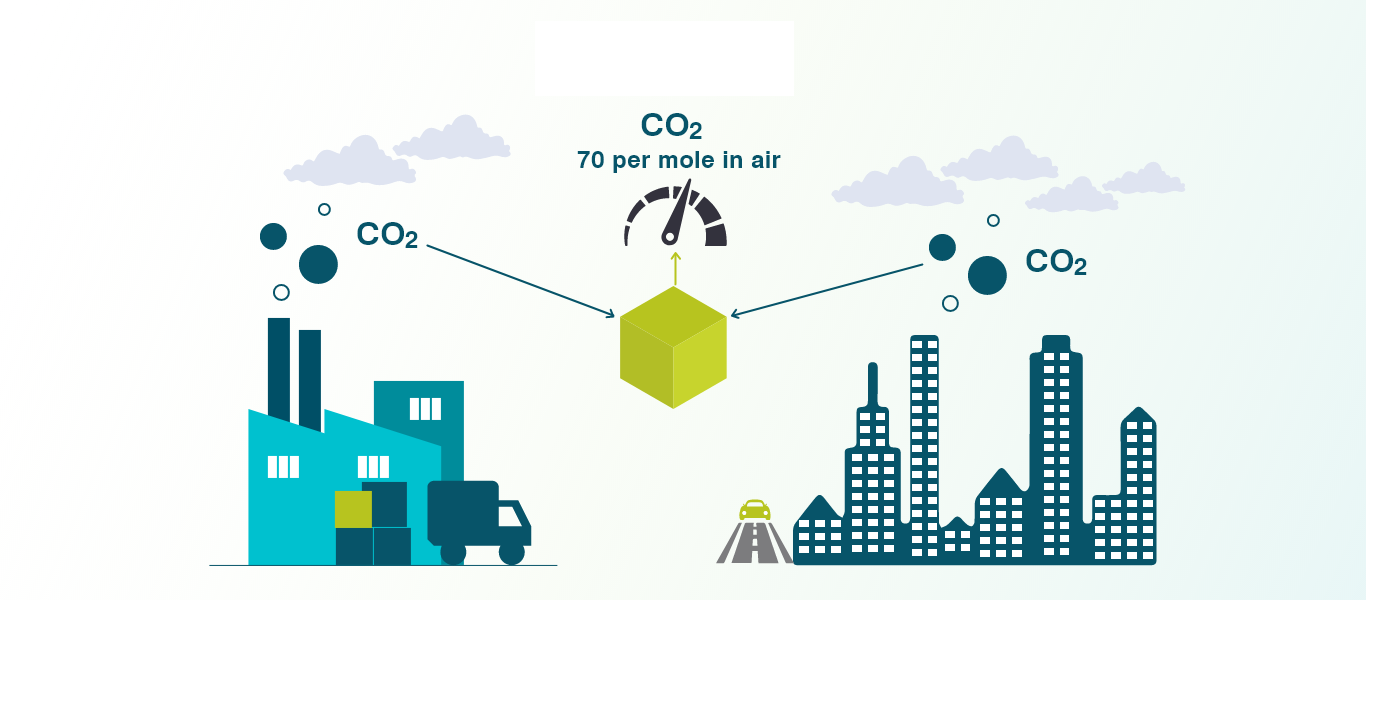The Carbon Footprint Of Blockchain - 5 Surprising Facts That You Need To Know
Discover how blockchain technology is reshaping industries while unraveling its environmental impact. Explore the carbon footprint of blockchain and learn how innovation intersects with sustainability.
Author:Stefano MclaughlinReviewer:Camilo WoodFeb 16, 20244.6K Shares80.9K Views

In the digital age, Carbon Footprint Of blockchaintechnology has emerged as a revolutionary force, promising unparalleled security and transparency across various sectors. However, amidst the buzz of its potential, lies a critical concern often overlooked, the carbon footprint of blockchain.
As transactions are recorded and verified through energy-intensive mining processes, the environmental toll of blockchain becomes increasingly evident. Each Bitcoin transaction alone is estimated to have a carbon footprint equivalent to several hundred thousand Visa transactions.
5 Surprising Facts
The carbon footprint of blockchain technology is a complex and evolving topic, with estimates varying widely depending on methodology and the specific blockchain being considered. While it's true that some aspects of blockchain can be energy-intensive, there are also surprising facts and ongoing developments to consider. Here are 5 points to remember:
1. Not All Blockchains Are Created Equal
The most well-known blockchain, Bitcoin, uses a "proof-of-work" consensus mechanism, which requires significant computing power and energy consumption. However, alternative consensus mechanisms like "proof-of-stake" are much less energy-intensive. Ethereum, for example, is transitioning to proof-of-stake, which is estimated to reduce its energy consumption by over 99%.
2. It's Not Just About The Technology
The energy consumption of any blockchain also depends on factors like hardware efficiency, energy sources used by miners, and the overall activity on the network. For example, a blockchain with fewer transactions requires less energy per transaction.
3. There's Constant Innovation
Developers are actively working on solutions to reduce the energy footprint of blockchains. This includes optimizing consensus mechanisms, using renewable energy sources, and exploring alternative blockchain architectures.
4. It's Not Just About Carbon
While carbon emissions are a major concern, the environmental impact of blockchain also includes factors like e-waste from discarded hardware and the potential for resource exploitation in certain mining operations.
5. Comparison Matters
Putting the energy consumption of blockchain in perspective is crucial. While some estimates compare it to entire countries, it's important to consider the wider context of global energy use and the potential benefits of blockchain technology itself.
The Environmental Impact Of Blockchain Technology
Blockchain technology boasts immense potential in various fields, but its environmental impact raises concerns. Here's a breakdown of the key aspects:
Key Concerns
- Energy Consumption -The "proof-of-work" consensus mechanism, like the one used in Bitcoin, relies on extensive computational power, leading to high energy demands. Estimates suggest Bitcoin's annual energy consumption rivals small countries. This raises concerns about greenhouse gas emissions and resource depletion.
- E-waste -As mining hardware becomes obsolete, it contributes to electronic waste, posing additional environmental challenges.
Positive Developments
- Alternative Consensus Mechanisms -Newer blockchains like Ethereum are transitioning to "proof-of-stake" which requires significantly less energy, reducing their environmental footprint.
- Renewable Energy Integration -Efforts are underway to power blockchain operations with renewable energy sources, mitigating the emissions impact.
- Efficiency Improvements -Developers are constantly optimizing consensus mechanisms and hardware to make blockchain operations more energy-efficient.
Beyond Carbon Footprint
While carbon emissions are a major concern, the environmental impact extends further:
- Resource Exploitation -Certain mining operations might exploit resources in unsustainable ways.
- Water Consumption -Water cooling is crucial for high-powered mining hardware, raising concerns in water-scarce regions.
Challenges
Quantifying the overall impact is challenging due to:
- Varying Methodologies -Estimates differ depending on the scope, data sources, and assumptions used.
- Network Dynamics -Energy consumption fluctuates with network activity, making generalizations difficult.
How Carbon Emissions Can Be Reduced In The Blockchain Space?
Reducing carbon emissions in the blockchain space requires a multi-pronged approach, addressing various aspects of the technology and its operations. Here are some key strategies:
1. Transitioning To Energy-efficient Consensus Mechanisms
- Proof-of-stake (PoS) -Compared to the energy-intensive proof-of-work (PoW) used in Bitcoin, PoS validates transactions based on stake ownership, eliminating the need for extensive computational power. Ethereum's transition to PoSis expected to reduce its energy consumption by over 99%.
- Hybrid approaches -Combining PoS with other mechanisms like proof-of-authority can further optimize energy usage.
2. Utilizing Renewable Energy Sources
- Investing in renewable energy infrastructure -Powering mining operations and data centers with solar, wind, geothermal, or hydropower significantly reduces the carbon footprint.
- Partnering with renewable energy providers -Collaborations between blockchain projects and renewable energy companies can accelerate sustainable transition.
3. Improving Energy Efficiency
- Optimizing hardware and software -Utilizing energy-efficient hardware and software for mining and network operations can make a significant difference.
- Implementing resource management techniques -Optimizing resource allocation and reducing idle hardware usage can contribute to energy savings.
4. Encouraging Decentralization And Scalability
- Layer 2 solutions -Scaling blockchains through second-layer solutions like sidechains and rollups can reduce energy consumption per transaction.
- Promoting geographically distributed networks -Decentralized networks spread across various locations can leverage diverse energy sources and potentially reduce reliance on high-carbon grids.
5. Investing In Research And Innovation
- Exploring alternative consensus mechanisms -Ongoing research explores new consensus mechanisms with even lower energy footprints.
- Developing energy-efficient hardware and software -Continuous innovation in specialized hardware and software can further optimize energy usage.
6. Implementing Supportive Regulatory Frameworks
- Governments and organizations can encourage sustainable practices -This includes promoting renewable energy integration and setting standards for energy-efficient practices.
- Carbon pricing and offset mechanisms -Implementing carbon pricing schemes or offset programs can incentivize blockchain projects to reduce their emissions.
How Blockchain Technology Addresses The Double Counting Of Carbon Emissions?
Blockchain technology holds potential to address double counting of carbon emissions through several key features:
1. Immutable and Transparent Ledger -Blockchain operates on a decentralized ledger, meaning all transactions are recorded permanently and publicly. This eliminates the possibility of tampering or deleting records, ensuring authenticity and traceability of carbon credits. Every transfer of a credit is documented, making it clear who owns it and preventing duplicate claims.
2. Unique Identifiers -Carbon credits issued on a blockchain platform can be assigned unique identifiers, similar to digital tokens. These identifiers differentiate each credit, making it impossible to claim the same credit twice on the same or different platforms.
3. Smart Contracts -These self-executing contracts programmed on the blockchain automate the processes of issuing, transferring, and retiring carbon credits. They enforce pre-defined rules, ensuring credits are only created based on verifiable emission reductions and retired after use, preventing double counting.
4. Enhanced Verification -Blockchain allows for the storage of detailed information about carbon offset projects, including verification reports, audits, and project location data. This transparency empowers stakeholders to independently verify the legitimacy of credits and avoid potential double counting.
5. Interoperability -Different blockchain platforms can be designed to be interoperable, meaning credits could potentially be transferred across platforms while maintaining their unique ID and ownership history. This would increase liquidity and transparency within the carbon market, further reducing the risk of double counting.
Why Is Ensuring Due Diligence On Carbon Emissions So Important?
Ensuring due diligence on carbon emissions is critically important for several key reasons:
1. Combating Greenwashing
Due diligence helps uncover and prevent greenwashing, where organizations make misleading claims about their carbon footprint or the effectiveness of their emission reduction efforts. This protects consumers, investors, and other stakeholders from being misled and ensures that resources are channeled towards genuine green initiatives.
2. Maintaining Integrity Of Carbon Markets
Thorough verification of emission reductions underpinning carbon credits is crucial for the integrity and effectiveness of carbon markets. Due diligence helps ensure that credits represent real, measurable, and additional reductions, preventing the market from being inflated by unverifiable or fraudulent claims.
3. Achieving True Sustainability
Effective climate action requires accurate measurement and transparent reporting of carbon emissions. Due diligence promotes accountability and encourages organizations to take responsibility for their emissions and implement meaningful reduction strategies.
4. Mitigating Financial Risks
Investors increasingly consider climate risks and opportunities when making decisions. Robust due diligence on carbon emissions helps them assess the potential financial impact of climate change on their investments and identify companies genuinely committed to transitioning towards a low-carbon future.
5. Building Trust And Transparency
When organizations conduct thorough due diligence on their emissions, they demonstrate transparency and commitment to sustainability, fostering trust with stakeholders and consumers. This transparency ultimately encourages broader participation in and support for climate action.
FAQ's About Carbon Footprint Of Blockchain
What Is The Carbon Footprint Of Ethereum Blockchain?
Under its post-Merge system, Ethereum uses over 99% less energy, developers say. Its current yearly emissions are around 2.8 kilotonnes carbon dioxide equivalent, the study found - around the same as five round-trip flights from London to New York.
Can Blockchain Be Environmentally Friendly?
Waste Management: Blockchain tracks waste disposal and recycling activities, improving waste management and reducing environmental impact. Tokenized Green Investments: Blockchain allows for tokenized ownership in green assets like renewable energy projects or carbon credits.
What Is The Carbon Footprint Of A NFT?
Once the NFT has been mined, added to a blockchain and minted, the carbon cost of each individual piece continues. Every time a bid is submitted for an NFT it costs 23kg of CO2 (0.38 trees), every sale of an NFT produces 51kg of CO2 (0.85 trees), and every transfer of an NFT produces 30kg of CO2 (0.5 trees).
Conclusion
The carbon footprint of blockchain technology poses a significant challenge that cannot be ignored. While blockchain offers immense potential for revolutionizing various industries, its environmental impact demands urgent attention and action.
As we navigate the complexities of the digital age, it is essential to prioritize sustainability alongside innovation. Solutions such as transitioning to more energy-efficient consensus mechanisms, promoting renewable energy use in mining operations, and implementing carbon offset programs can help mitigate the environmental consequences of blockchain.
Jump to
5 Surprising Facts
The Environmental Impact Of Blockchain Technology
How Carbon Emissions Can Be Reduced In The Blockchain Space?
How Blockchain Technology Addresses The Double Counting Of Carbon Emissions?
Why Is Ensuring Due Diligence On Carbon Emissions So Important?
FAQ's About Carbon Footprint Of Blockchain
Conclusion

Stefano Mclaughlin
Author

Camilo Wood
Reviewer
Latest Articles
Popular Articles

